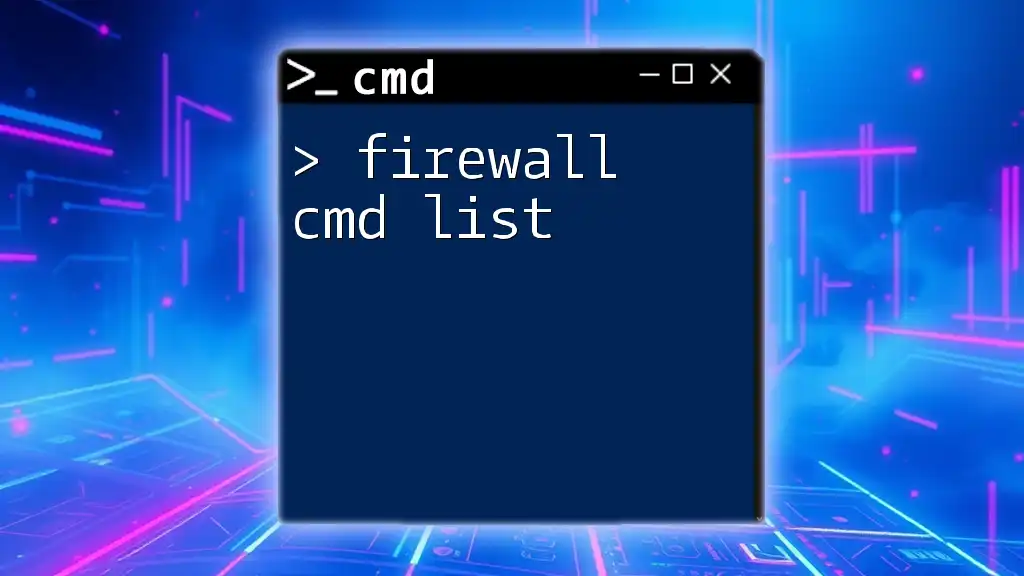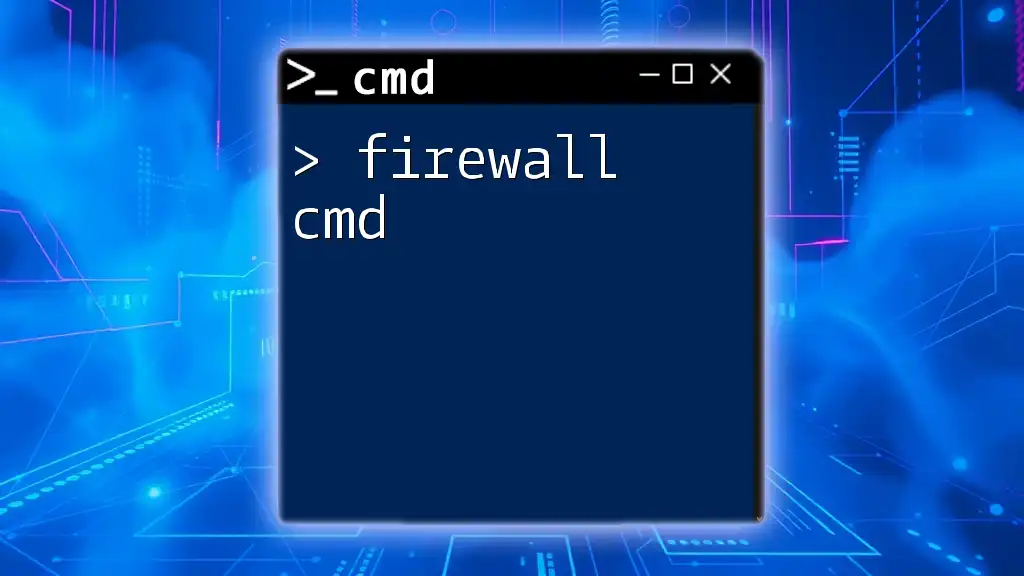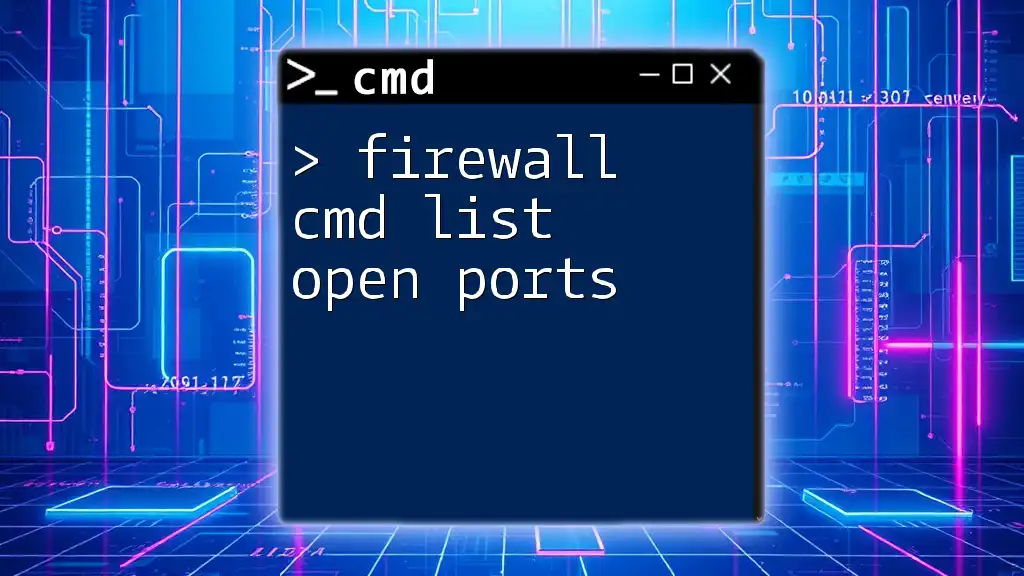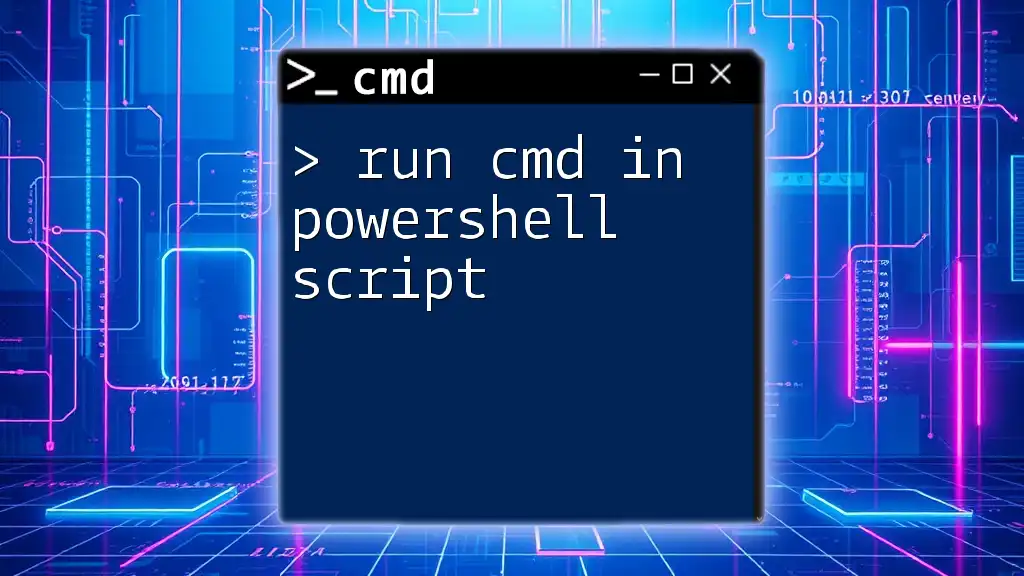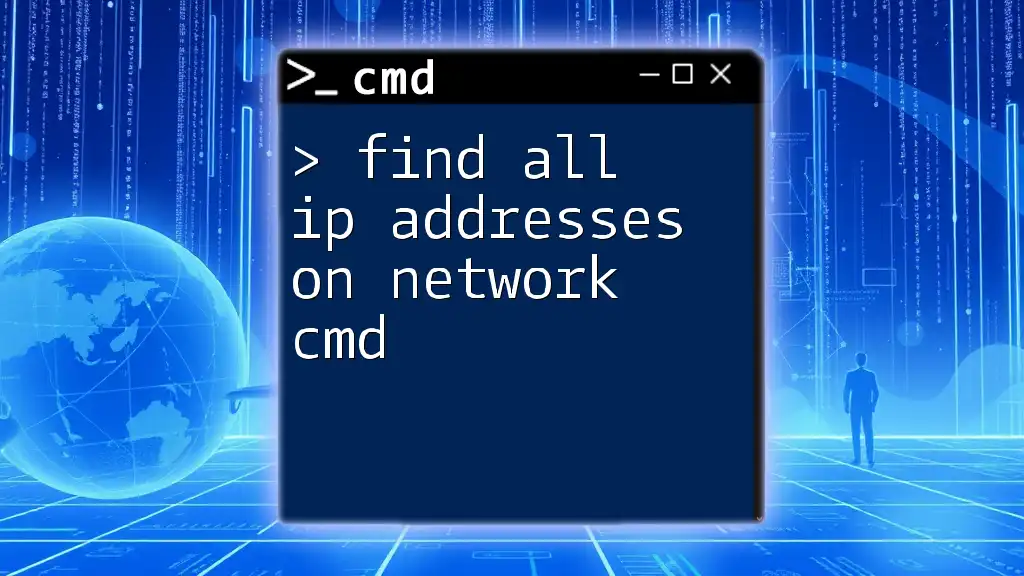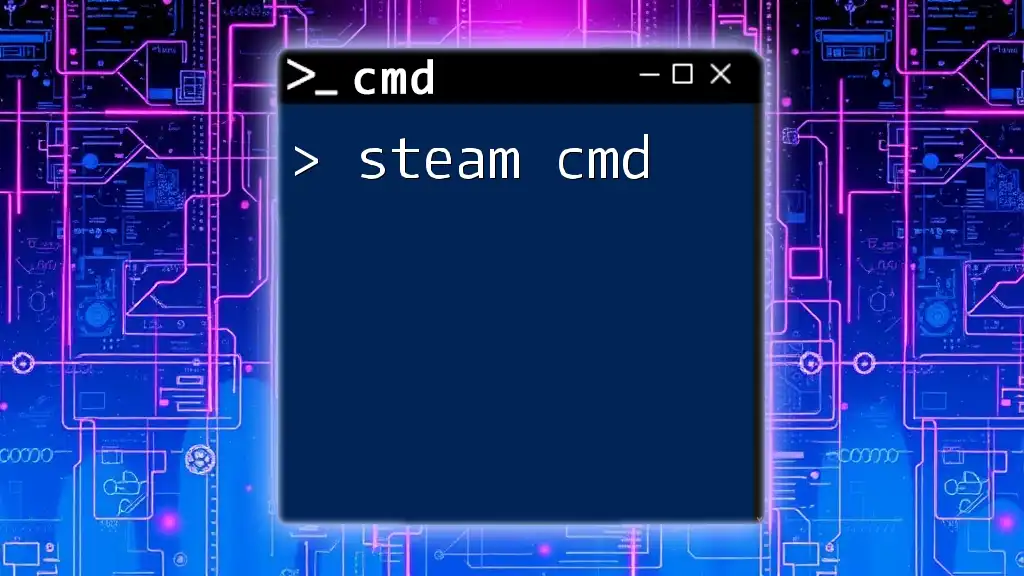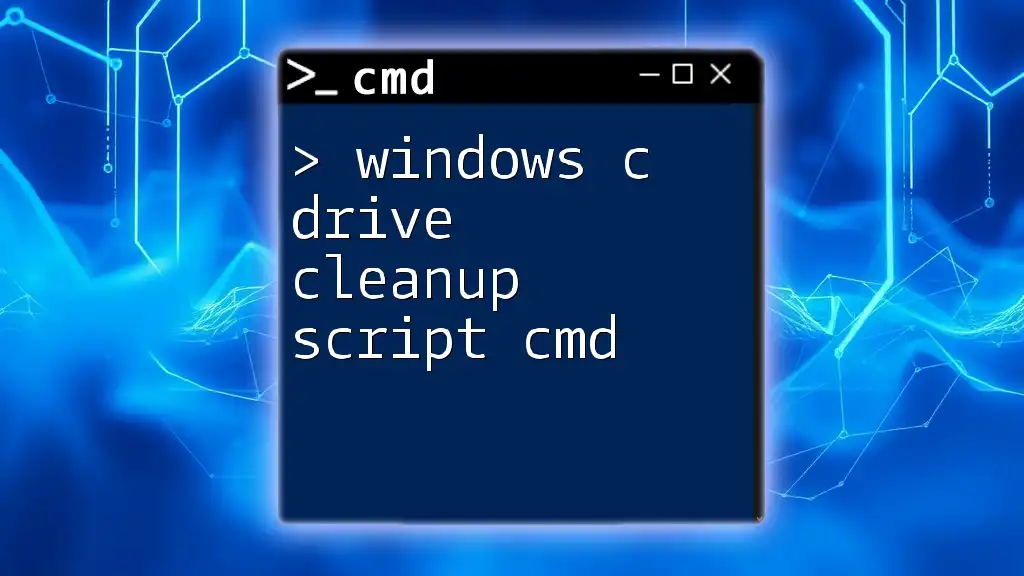To allow traffic on a specific port in Red Hat Enterprise Linux (RHEL) using `firewall-cmd`, you can use the following command, which opens port 8080 as an example:
firewall-cmd --zone=public --add-port=8080/tcp --permanent
Understanding Firewalld
What is Firewalld?
Firewalld is a powerful tool for managing firewall rules on Linux systems, particularly in RHEL (Red Hat Enterprise Linux). It provides dynamic firewall management, allowing system administrators to manage and modify rules on the fly without needing to restart the firewall. This flexibility is crucial for maintaining a secure environment without interrupting services.
Key Components of Firewalld
Firewalld consists of various components that help configure the firewall:
- Zones: Zones define the trust level of network connections. Different zones can be configured with specific rules to allow or deny traffic.
- Services: These are predefined rules that group common ports and protocols. Instead of specifying individual ports, users can enable services that manage multiple ports.
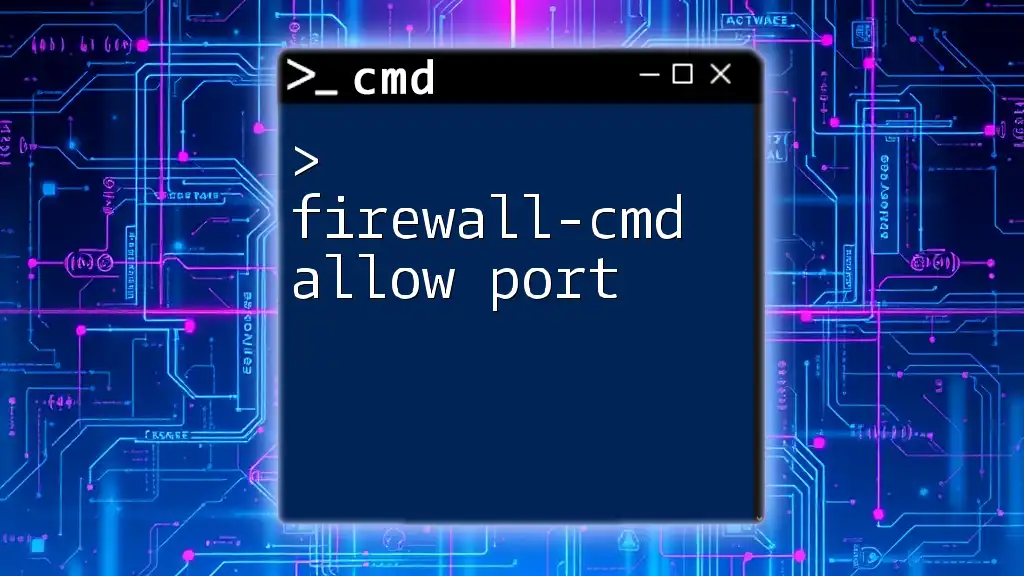
Getting Started with Firewall-cmd
Installing Firewalld
Before using `firewall-cmd`, ensure that firewalld is installed on your RHEL system. You can do this by executing:
sudo yum install firewalld
Starting and Enabling Firewalld
Once installed, you need to start firewalld and enable it to launch at boot:
sudo systemctl start firewalld
sudo systemctl enable firewalld
This ensures that your firewall is active and protecting your system from unauthorized access right from the start.

Adding a Port with Firewall-cmd
Syntax of the Command
The basic syntax for adding a port with `firewall-cmd` is as follows:
firewall-cmd --zone=<zone> --add-port=<port>/<protocol> --permanent
Let’s break down this command quickly:
- `--zone=<zone>`: Specify the zone to which you want to add the port, like `public` or `internal`.
- `--add-port=<port>/<protocol>`: The actual port and its corresponding protocol (TCP or UDP).
- `--permanent`: This flag ensures that the change persists even after a reboot.
Selecting the Right Zone
Before adding a port, it's essential to select the correct zone according to your network's configuration:
- public: Not fully trusted; suitable for external access.
- private: More trusted; used in trusted internal networks.
- internal: For internal networks with stricter security policies.
You can check the currently active zones using the command:
firewall-cmd --get-active-zones
This output will help you identify which zones are currently active and available for your configuration.
Adding a Port - Step-by-Step Process
Choosing a Port and Protocol
Consider the port and the protocol required for your application. For example, HTTP operates on port 80, while HTTPS works on port 443. Choosing the correct port is crucial to ensure proper functionality.
Example Command
To add an HTTP port (80) to the public zone, you would use the following command:
firewall-cmd --zone=public --add-port=80/tcp --permanent
This command opens port 80 for incoming traffic over TCP in the public zone.
Making Changes Temporary vs Permanent
The `--permanent` flag is critical. Without it, your changes will only last until the next reload of the firewall configuration. To apply your changes temporarily, simply omit the `--permanent` flag.
Reloading the Firewall Configuration
After adding a port, it's essential to reload the firewall to apply the changes:
firewall-cmd --reload
Failure to reload will mean that the changes you’ve made won’t take effect.
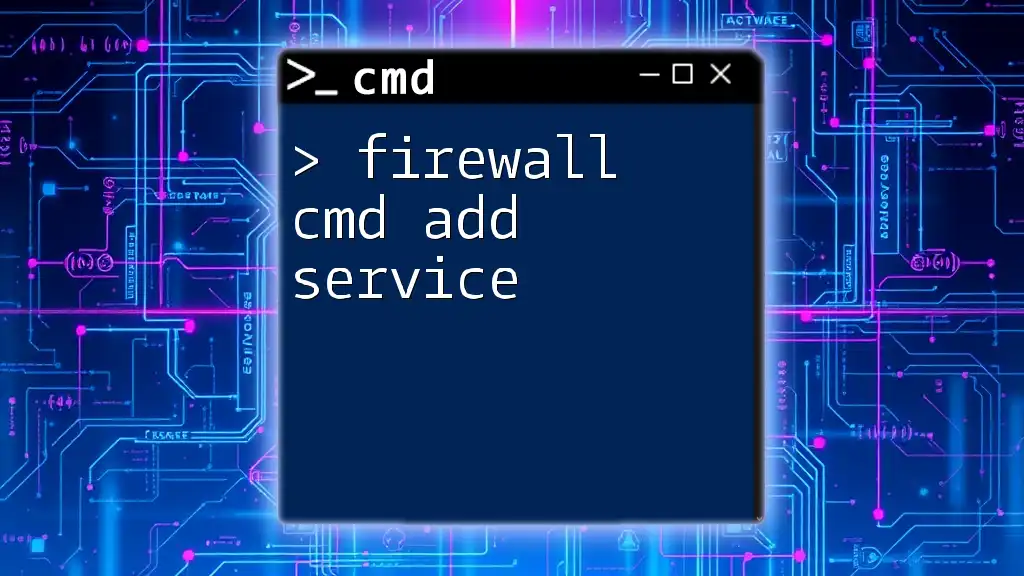
Verifying the Changes
Checking Open Ports
To ensure that your changes have been successfully applied, you can verify the open ports on your firewall:
firewall-cmd --list-ports
This command will provide a list of all configured ports, allowing you to confirm that your newly added port is listed.
Checking Services Allowed in a Zone
You may also want to confirm which services are allowed in a specific zone. To see the services configured in the public zone, for instance, you can run:
firewall-cmd --zone=public --list-services
This helps verify that the necessary services are properly configured with your firewall settings.
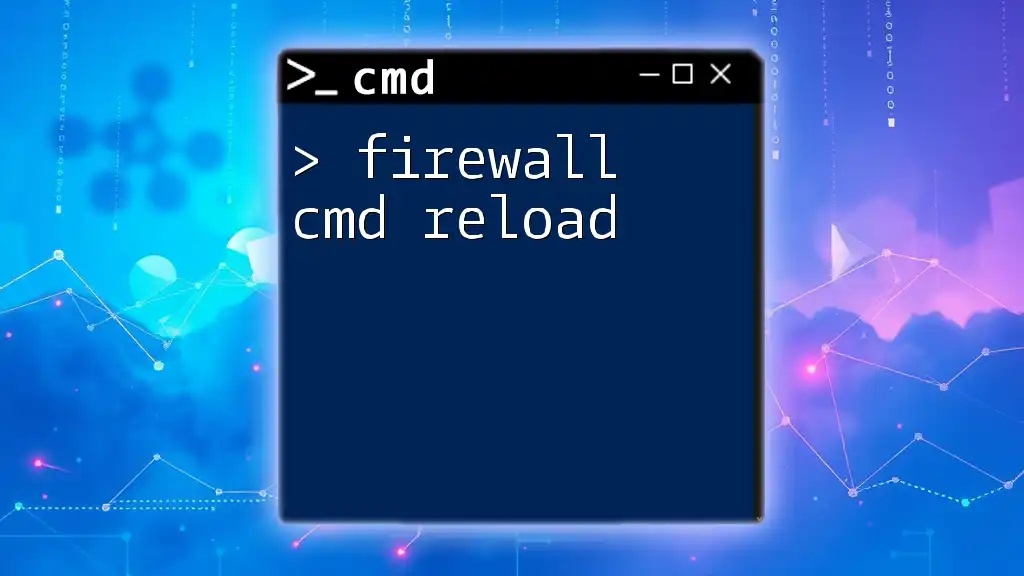
Troubleshooting Common Issues
Common Error Messages
While working with `firewall-cmd`, you may occasionally encounter errors. Common error messages include issues due to incorrect zones or ports, or lack of privileges. Ensure you are running commands with appropriate permissions, as administrative rights are often required.
Checking Logs for Additional Details
For more detailed information about firewall operations and any errors, checking the logs can be beneficial. Use the following command to inspect log entries:
journalctl -xe | grep firewalld
This command helps filter logs related to firewalld, providing context for issues that may arise.

Conclusion
In this article, we explored how to effectively use the `firewall-cmd` utility to add ports on RHEL. By following the steps outlined—understanding firewalld, adding the port, and verifying the changes—you can enhance your system's security and functionality seamlessly.
Practice these commands to familiarize yourself, and consider delving into further resources such as Firewalld documentation for a deeper understanding. Effortlessly managing your firewall will empower you to maintain a robust security posture for your network.
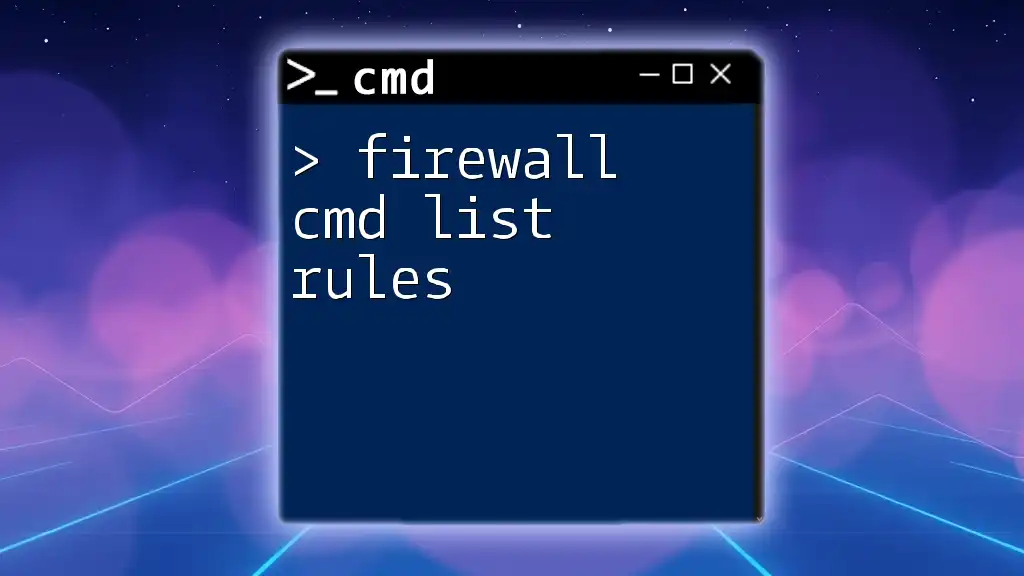
FAQs
What is the difference between firewalld and iptables?
Firewalld offers a more user-friendly approach to managing firewall rules with dynamic updates, while iptables is a lower-level interface requiring more manual configurations. Firewalld groups configurations by zones and services, simplifying complex setups.
How do I remove a port?
If you need to remove an already added port, you can execute:
firewall-cmd --zone=public --remove-port=80/tcp --permanent
This will delete port 80 from the public zone.
Are there other commands I should know?
Yes, other useful commands include:
- To list all active rules:
firewall-cmd --list-all
- To change the default target zone:
firewall-cmd --set-target=<target-zone>
Utilizing `firewall-cmd` efficiently can significantly enhance your control over network traffic on your RHEL system. By mastering the addition and management of ports, you set the stage for a secure and functional networking environment.







